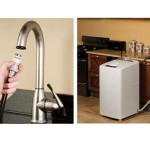Toilet Sink and Vanity Unit: A Comprehensive Guide
The integration of a toilet sink and vanity unit represents a significant advancement in modern bathroom design. This combination offers a practical solution for space optimization, improved hygiene, and enhanced aesthetics. Understanding the various aspects of these units, from their types and benefits to installation and maintenance, is crucial for anyone considering incorporating them into their bathroom.
The fundamental purpose of a toilet sink and vanity unit is to merge the functions of handwashing and toilet use into a single, compact area. This is particularly beneficial in smaller bathrooms or powder rooms where space is at a premium. The design typically involves a small sink integrated either directly onto the toilet tank or as a separate unit positioned adjacent to the toilet. The vanity component usually provides storage space for toiletries and cleaning supplies, further maximizing the utility of the limited area.
Types of Toilet Sink and Vanity Units
The market offers a diverse range of toilet sink and vanity units, each catering to specific needs and aesthetic preferences. The different types can be broadly categorized based on their installation method, sink placement, and vanity style.
Integrated Toilet-Sink Combinations: These units feature a sink directly mounted on top of the toilet tank. Water used for handwashing drains into the toilet tank, refilling it for the next flush. This design offers significant water savings and is ideal for small spaces. However, the sink size is typically limited, and the style options may be less varied compared to other types.
Wall-Mounted Toilet with Separate Sink: This configuration involves a wall-mounted toilet and a separate small sink positioned adjacent to it. The sink can be either wall-mounted or placed on a small vanity unit. This type allows for more flexibility in terms of sink size and vanity style. Wall-mounted toilets also create a more spacious feel by freeing up floor space.
Corner Toilet with Corner Sink: For bathrooms with challenging layouts, corner toilets and sinks can be an excellent solution. These units are designed to fit snugly into corners, maximizing space efficiency. The sink can be a small corner-mounted basin or a small vanity unit specifically designed for corner placement.
Freestanding Vanity Units with Toilet: While less common, some designs integrate a freestanding vanity unit with a toilet. The vanity provides ample storage space, and the toilet is positioned either next to or within the vanity unit. This type offers a more luxurious and integrated look, but it requires more floor space.
Materials Used in Toilet Sink and Vanity Units: The materials used in constructing these units vary widely, impacting their durability, aesthetics, and price. Common materials include:
*Ceramic: Widely used for toilet bowls and sinks due to its durability, resistance to staining, and ease of cleaning.
*Porcelain: Similar to ceramic but typically more durable and less porous.
*Stone Resin: Used for sinks and vanity tops, offering a smooth, non-porous surface that is resistant to scratches and stains.
*Wood: Used for vanity cabinets, providing a warm and natural aesthetic. Different types of wood, such as oak, maple, and birch, offer varying degrees of durability and water resistance.
*MDF (Medium-Density Fiberboard): A cost-effective alternative to solid wood, often used for vanity cabinets. It is important to choose MDF that is treated to resist moisture.
*Stainless Steel: Used for fixtures, faucets, and sometimes for vanity frames, offering a modern and durable option.
Benefits of Integrating a Toilet Sink and Vanity Unit
The integration of a toilet sink and vanity unit presents numerous advantages, making it a compelling choice for homeowners and designers. These benefits extend beyond mere space-saving to encompass hygiene, sustainability, and aesthetic appeal.
Space Optimization: In compact bathrooms, every square inch matters. Combining the toilet and sink functions into a single unit significantly reduces the footprint required for these essential fixtures. This is particularly advantageous in apartments, condominiums, and smaller homes where bathroom space is often limited. The resulting space savings can improve the overall flow and functionality of the bathroom.
Improved Hygiene: A toilet sink facilitates immediate handwashing after toilet use. This promotes better hygiene habits, especially in households with children. The proximity of the sink to the toilet eliminates the need to walk across the bathroom to wash hands, reducing the spread of germs and bacteria. This is a critical factor in maintaining a healthy environment.
Water Conservation: Certain integrated toilet-sink combinations, such as those where the handwashing water refills the toilet tank, contribute to water conservation. By reusing water that would otherwise go down the drain, these systems reduce the overall water consumption of the household. This is not only environmentally responsible but also helps lower water bills.
Enhanced Aesthetics: Toilet sink and vanity units are available in a wide range of styles and finishes, allowing homeowners to customize their bathroom décor. From sleek and modern designs to more traditional and ornate options, these units can complement any aesthetic preference. The vanity component also provides a visually appealing storage solution, concealing clutter and promoting a cleaner, more organized look.
Increased Property Value: Modern bathroom renovations, including the installation of a toilet sink and vanity unit, can increase the value of a property. Potential buyers are often drawn to features that offer both functionality and aesthetic appeal. A well-designed bathroom can be a significant selling point, attracting more buyers and potentially increasing the sale price.
Installation and Maintenance Considerations
Proper installation and regular maintenance are essential for ensuring the longevity and optimal performance of a toilet sink and vanity unit. While some homeowners may opt for DIY installation, professional installation is generally recommended to avoid potential plumbing issues and ensure compliance with building codes.
Installation Process: The installation process varies depending on the type of unit. Integrated toilet-sink combinations require careful plumbing connections to ensure that the handwashing water flows correctly into the toilet tank. Wall-mounted toilets and sinks require secure mounting to the wall studs to support their weight. Vanity units must be properly leveled and secured to the floor or wall to prevent wobbling or damage. A professional plumber can ensure that all connections are watertight and that the unit is installed correctly. Before installation, always verify that the existing plumbing is compatible with the new fixture.
Regular Cleaning: Regular cleaning is crucial for maintaining the hygiene and appearance of the toilet sink and vanity unit. The sink should be cleaned daily with a mild detergent to remove soap scum and water stains. The toilet bowl should be cleaned regularly with a toilet bowl cleaner to prevent the buildup of mineral deposits. The vanity cabinet should be wiped down with a damp cloth to remove dust and spills. Avoid using abrasive cleaners or scouring pads, as these can scratch the surfaces.
Preventative Maintenance: Regularly inspect the plumbing connections for leaks. Tighten any loose connections to prevent water damage. Check the drain for clogs and clear them as needed. If the unit has a water-saving feature, ensure that it is functioning properly. Consider using a water softener to reduce the buildup of mineral deposits in the toilet and sink.
Addressing Repairs: Promptly address any necessary repairs. Leaks, cracks, or other damage can lead to more serious problems if left unattended. If you are not comfortable performing the repairs yourself, hire a qualified plumber or contractor. Ignoring even minor issues can result in costly repairs down the line.
Sealant Inspection: Regularly inspect the sealant around the edges of the sink and vanity. If the sealant is cracked or peeling, remove it and reapply a fresh bead of sealant. This will prevent water from seeping behind the unit and causing mold or mildew growth.
The inclusion of a toilet sink and vanity unit presents a multifaceted solution to bathroom design challenges. It’s essential to weigh the different types, consider the installation implications, and adhere to consistent maintenance routines to fully realize the benefits of this functional addition.

1200mm Combined Square Charcoal Vanity Unit Toilet Sink Marble Top Basin Floor

Bathroom Grey Painted Vanity Unit Corner Sink Cabinet With Oak Top Ceramic Wash Basin Tap Plug Etsy

18 Free Standing Bathroom Vanity Cabinet Set Sink For Small Space W Door

Hand Crafted Premium Vanity Unit Wash Stand Family Bathroom Cabinet Single Basin Cloak Room Wetroom Multiple Sizes Etsy

Bathroom Vanity Unit Oak Cabinet Wash Stand White Quartz Ceramic Basin 502wqcbc Etsy

Cove 950mm Cloakroom Vanity Unit Suite Basin Mixer Gloss White Depth 300mm Victorian Plumbing Uk

Bathroom Toilet And Furniture Storage Vanity Unit Sink Basin Grey 1167mm

Sink Toilet Deals Vanity Unit

A Er S Guide To Bathroom Vanity Units Big Inspiration

Modern Bathroom Basin Sink Vanity Toilet Wc Concealed Cistern Unit Matte White







